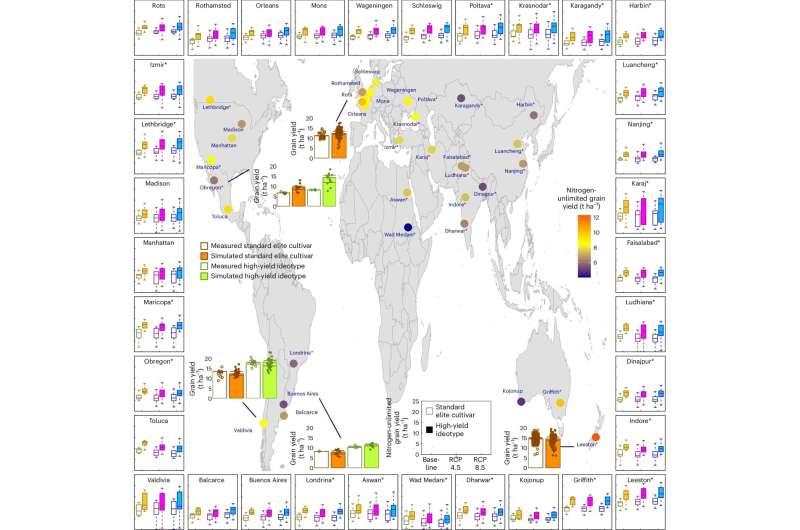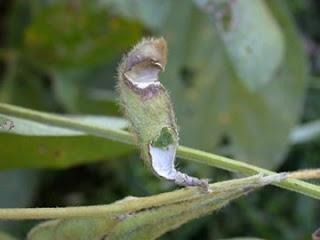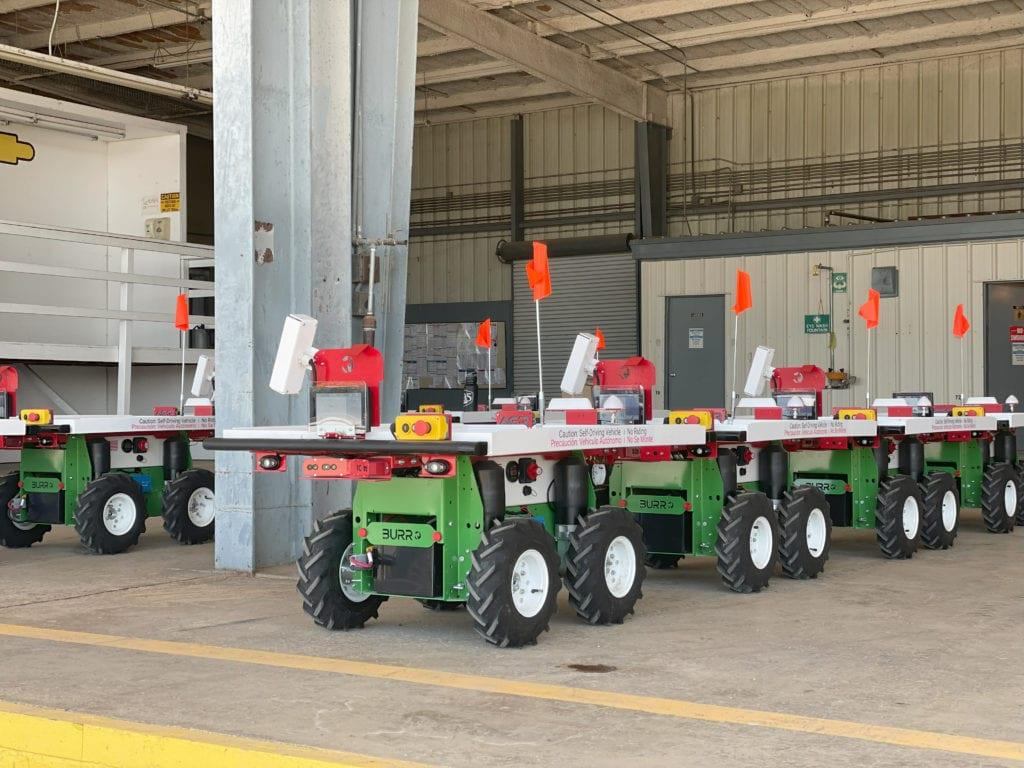By Anthony Hanson
UMN Extension Educator (hans4022@umn.edu) - Integrated Pest Management, Ian MacRae - UMN Extension Entomologist, Bruce Potter - UMN Extension IPM Specialist, Robert Koch - UMN Extension Soybean Entomologist, and Fei Yang - UMN Extension Corn Entomologist
High grasshopper populations have been observed in several areas of Minnesota in 2023. If grasshoppers are a concern in your fields, a recently updated extension guide on grasshoppers in field crops will give in-depth guidance on grasshopper species, how to scout, and what thresholds and insecticides should be used for each crop.

Differential grasshopper
Grasshoppers generally prefer areas with undisturbed soil to lay eggs such as in pastures, hay ground, field edges, road ditches, and sometimes cropland. The immatures (i.e., wingless nymphs) and adults feed on live grasses and forbs. The depletion of their food source from grasshopper feeding, roadside and hay land mowing, and small grain harvest can encourage movement to other areas, affecting neighboring crop borders.
Flying grasshoppers stop and land when they encounter a vertical object such as that represented by tall corn, so they are usually a border issue in corn unless infested very early or hatching within the field.
Differential grasshoppers are the species most likely to be found foraging deeper into MN corn late in the season. Pay close attention to corn near alfalfa or grasslands. Redlegged and twostriped grasshoppers will also oviposit in alfalfa and soybeans, sometimes well into the field.
Grasshoppers do well in warm, dry conditions when diseases that suppress their populations are less prevalent. Two or more consecutive warm, dry springs and drier than normal summers help explain the higher grasshopper populations farmers are seeing in areas of Minnesota. However, if grasshopper numbers and crop injury are below economic levels, it is not a good practice to treat grasshoppers to prevent egg laying.
Timely rains may still help suppress grasshopper populations, though wet conditions typically have a stronger effect on younger nymphs earlier the growing season by favoring the microsporidian Nosema, the fungi Beauveria and Entomophthora, and other pathogens. Growers should continue to keep an eye on their soybeans and other crops in August. The winged adults that are developing now are mobile and can move further into fields. While this may help disperse grasshopper densities, it also reduces the chances for controlling hopper problems on field borders. In general, grasshopper scouting entails determining the number of grasshoppers per square yard, though percent defoliation for soybeans can also be used as a treatment decision metric.
Scouting in alfalfa, corn, and small grains
To scout for grasshoppers in alfalfa, corn, small grains (that are still green), or most other crops, ground counts are used to determine treatment thresholds as the grasshopper population per yd2 (Table 1). Treatment thresholds are similar for these crops at the threatening category of 21-40 adults per yd2 along field margins or 8-14 adults per yd2 within the field. Economic injury can occasionally occur in the light rating category, but this is highly dependent on crop growth stage and other factors. More information is provided here on ground-based counts for scouting in specific crops.
Table 1. Count-based grasshopper thresholds suited for alfalfa, corn, and small grains.

Soybean scouting
Soybeans can tolerate some defoliation before yield is affected enough to justify an insecticide treatment, so defoliation can be used for scouting rather than ground counts of grasshoppers. Grasshopper leaf feeding is most common, but pod feeding can affect yield much more directly and is less tolerable (Fig. 1).

To scout for grasshoppers in soybeans, examine multiple plants from throughout the field. For each plant, look at a top, middle and bottom leaf and estimate the percentage of leaf area that has been consumed (percent defoliation) for each leaf. Do not only sample top leaves since this can overestimate defoliation. Then, calculate the average level of defoliation for that field across the multiple plants inspected and the multiple leaves per plant.
In reproductive stage soybeans, insecticide treatment should be considered if the average defoliation level for the field reaches 20% or more (Fig. 2). This defoliation threshold considers feeding injury from all defoliating insects combined, such as grasshoppers, caterpillars, beetles, etc. As pods and seeds develop, pay special attention to grasshoppers feeding on these structures. If feeding damage is present on more than 10% of pods or if grasshoppers are clipping pods from plants, the field should be treated. Count-based thresholds for grasshoppers in soybean and surrounding vegetation also exist.

Figure 2. Defoliation estimates for a single trifoliate soybean leaf. When scouting, be sure to average defoliation across the entire plant. When estimating defoliation, consider the entire soybean canopy (multiple plants and leaves from top, mid and bottom of each plant). Do not focus just on the heavily defoliation leaves. Image: Robert Koch, UMN.
Source : umn.edu